Higher classification Mint | Genus Mentha Rank Species | |
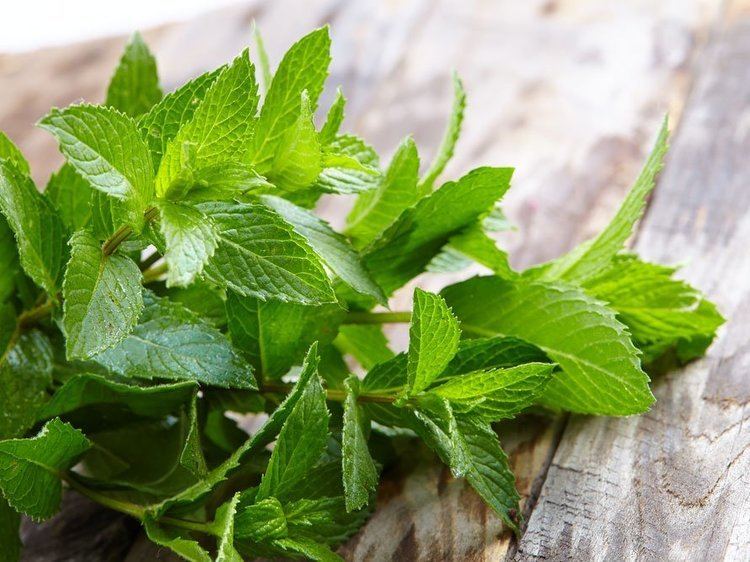 | ||
Similar Mint, Spearmint, Lavender, Rosemary, Lemon balm | ||
Peppermint (Mentha × piperita, also known as Mentha. balsamea Willd.) is a hybrid mint: a cross between watermint and spearmint. Indigenous to Europe and the Middle East, the plant is now widespread in cultivation in many regions of the world. It is occasionally found in the wild with its parent species.
Contents
- Botany
- Ecology
- Cultivation
- Chemical constituents
- Culinary and other uses
- Oil
- Medical uses
- Other uses
- Toxicology
- Chemistry
- List of the cultivars
- Standardization of its products and services
- References
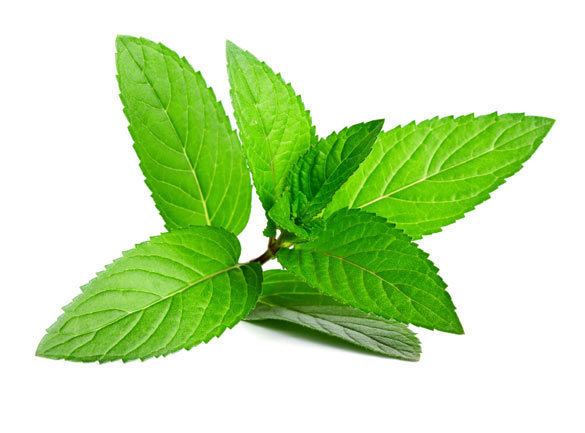
Botany
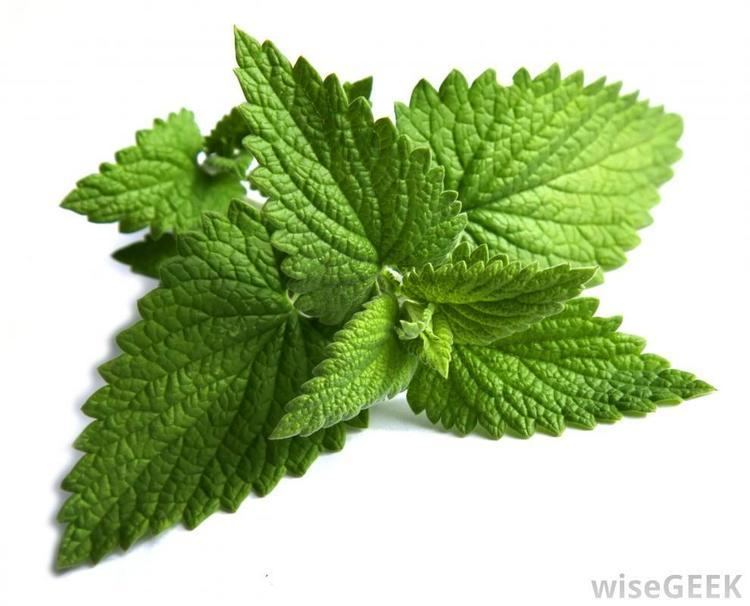
Peppermint was first described in 1753 by Carl Linnaeus from specimens that had been collected in England; he treated it as a species, but it is now universally agreed to be a hybrid. It is a herbaceous rhizomatous perennial plant that grows to be 30–90 cm (12–35 in) tall, with smooth stems, square in cross section. The rhizomes are wide-spreading, fleshy, and bare fibrous roots. The leaves can be 4–9 cm (1.6–3.5 in) long and 1.5–4 cm (0.59–1.57 in) broad. They are dark green with reddish veins, and they have an acute apex and coarsely toothed margins. The leaves and stems are usually slightly fuzzy. The flowers are purple, 6–8 mm (0.24–0.31 in) long, with a four-lobed corolla about 5 mm (0.20 in) diameter; they are produced in whorls (verticillasters) around the stem, forming thick, blunt spikes. Flowering season lasts from mid to late summer. The chromosome number is variable, with 2n counts of 66, 72, 84, and 120 recorded. Peppermint is a fast-growing plant; once it sprouts, it spreads very quickly.
Ecology
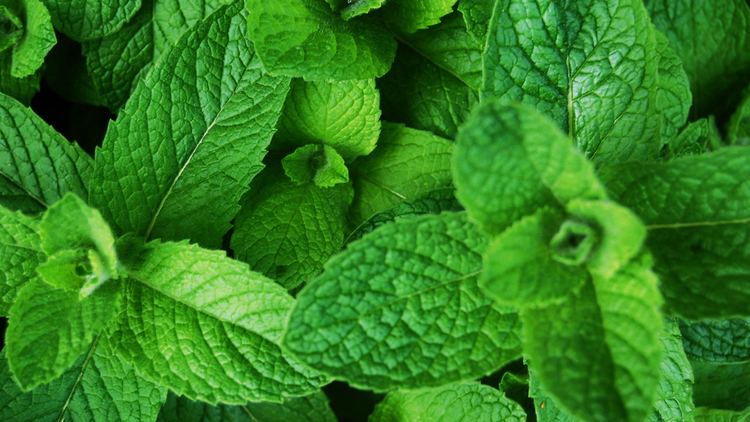
Peppermint typically occurs in moist habitats, including stream sides and drainage ditches. Being a hybrid, it is usually sterile, producing no seeds and reproducing only vegetatively, spreading by its rhizomes. If placed, it can grow anywhere, with a few exceptions.
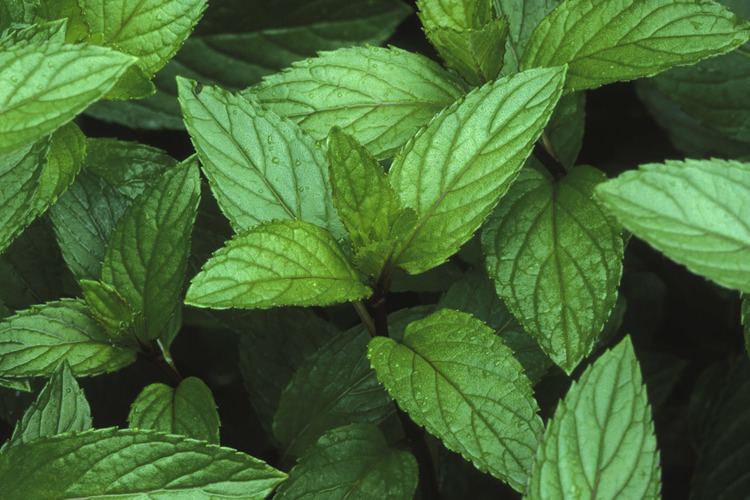
Outside of its native range, areas where peppermint was formerly grown for oil often have an abundance of feral plants, and it is considered invasive in Australia, the Galápagos Islands, New Zealand, and in the United States in the Great Lakes region, noted since 1843.
Cultivation
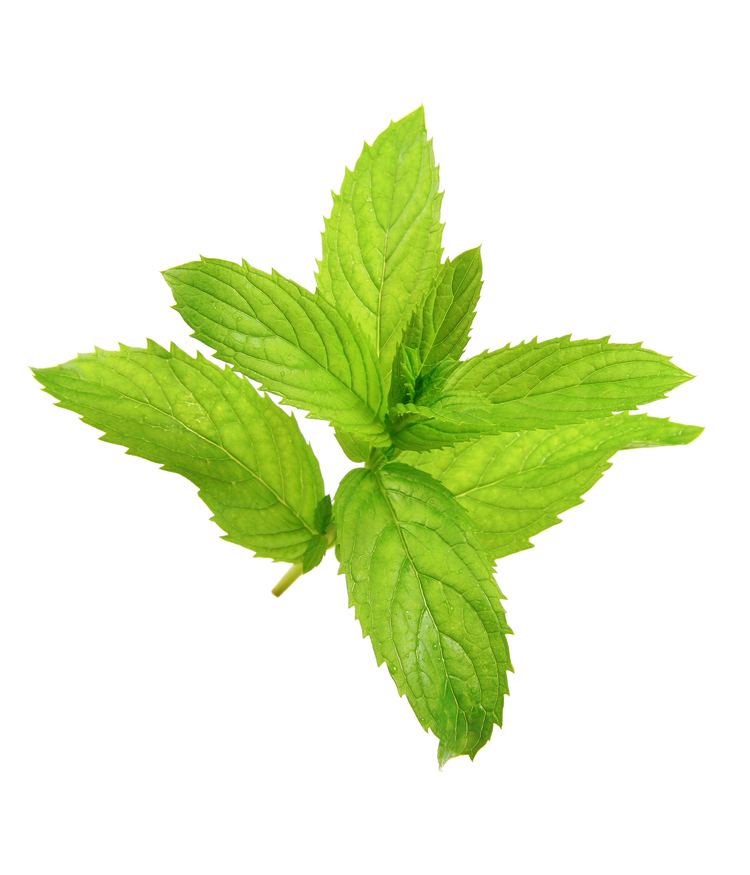
Peppermint generally grows best in moist, shaded locations, and expands by underground rhizomes. Young shoots are taken from old stocks and dibbled into the ground about 1.5 feet apart. They grow quickly and cover the ground with runners if it is permanently moist. For the home gardener, it is often grown in containers to restrict rapid spreading. It grows best with a good supply of water, without being water-logged, and planted in areas with part-sun to shade.
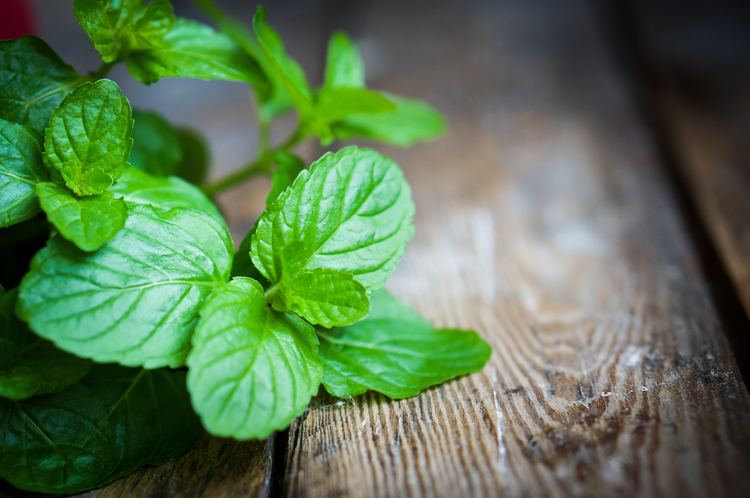
The leaves and flowering tops are used; they are collected as soon as the flowers begin to open and can be dried. The wild form of the plant is less suitable for this purpose, with cultivated plants having been selected for more and better oil content. They may be allowed to lie and wilt a little before distillation, or they may be taken directly to the still.
Chemical constituents
Peppermint has a high menthol content. The oil also contains menthone and carboxyl esters, particularly menthyl acetate. Dried peppermint typically has 0.3–0.4% of volatile oil containing menthol (7–48%), menthone (20–46%), menthyl acetate (3–10%), menthofuran (1–17%) and 1,8-cineol (3–6%). Peppermint oil also contains small amounts of many additional compounds including limonene, pulegone, caryophyllene and pinene.
Culinary and other uses
Fresh or dried peppermint leaves are often used alone or with other herbs in herbal teas (tisanes, infusions).
Peppermint is used for flavouring ice cream, confectionery, chewing gum, and toothpaste. Peppermint can also be found in some shampoos, soaps and skin care products.
Menthol activates cold-sensitive TRPM8 receptors in the skin and mucosal tissues, and is the primary source of the cooling sensation that follows the topical application of peppermint oil.
Oil
Peppermint oil has a high concentration of natural pesticides, mainly pulegone (Found mainly in Mentha arvensis var. piperascens Cornmint, Field Mint, Japanese Mint and to a lesser extent-6,530 ppm in Mentha x piperita subsp. nothosubsp. piperita) and menthone.
The chemical composition of the essential oil from peppermint (Mentha x piperita L.) was analyzed by GC/FID and GC-MS. The main constituents were menthol (40.7%) and menthone (23.4%). Further components were (+/-)-menthyl acetate, 1,8-cineole, limonene, beta-pinene and beta-caryophyllene.
Medical uses
Peppermint oil is under preliminary research for its potential as a short-term treatment for irritable bowel syndrome and has been used in traditional medicine for a limited number of minor ailments that remain scientifically unconfirmed for effectiveness. Peppermint oil may also act as a carminative, cholagogue, antibacterial, and secretolytic, and it has a cooling action. Externally, peppermint oil has been used for muscle pain, nerve pain and relief from itching.
High doses of peppermint oil (500 mg) can cause mucosal irritation and mimic episodes of heartburn. Usage of peppermint is thought to relax the lower esophageal sphincter, thus causing acid reflux, but a study disproved this theory, making peppermint safe to use as a flavoring in antacid medication.
The aroma of peppermint has been studied for possible memory and alertness enhancing properties.
Other uses
Peppermint oil is also used in construction and plumbing to test for the tightness of pipes and disclose leaks by its odor.
Toxicology
The toxicity studies of the plant have received controversial results. Some authors reported that the plant may induce hepatic diseases (liver disease), while others found that it protects against liver damage that is caused by heavy metals. In addition to that, the toxicities of the plant seem to vary from one cultivar to another and are dose dependent. This is probably attributed from the content level of pulegone.
With the limitation that the concentration of pulegone should not exceed 1%, it has been concluded that Mentha Piperita (Peppermint) Oil, Mentha Piperita (Peppermint) Extract, Mentha Piperita (Peppermint) Leaves, Mentha Piperita (Peppermint) Water are safe as used in cosmetic formulations.
When peppermint oil products are taken with antacid they dissolve too quickly, and they can sometimes cause heartburn and nausea. Due to the menthol constituent, topical use of peppermint oil around the facial or chest areas of infants and young children, especially around the nose, can induce apnea, laryngeal and bronchial spasm, acute respiratory distress with cyanosis, or respiratory arrest.
Chemistry
Peppermint also contains terpenoids and flavonoids such as eriocitrin, hesperidin and kaempferol 7-O-rutinoside.
List of the cultivars
A number of cultivars have been selected for garden use:
Commercial cultivars may include
